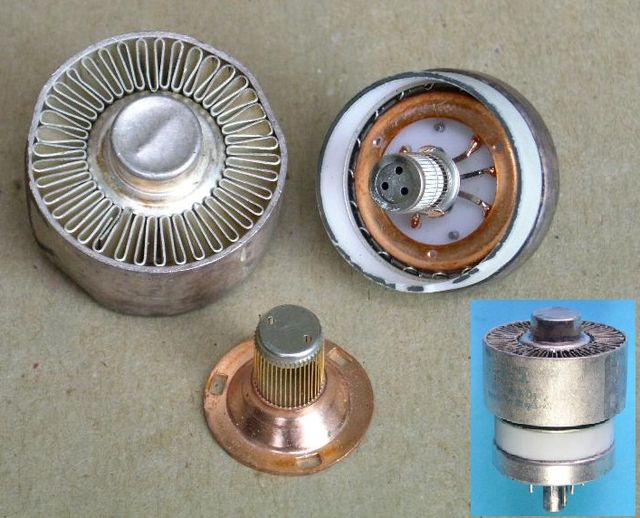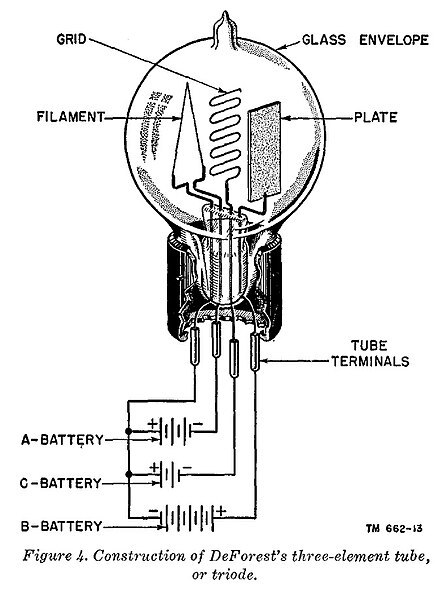A beam tetrode, sometimes called a beam power tube, is a type of vacuum tube or thermionic valve that has two grids and forms the electron stream from the cathode into multiple partially collimated beams to produce a low potential space charge region between the anode and screen grid to return anode secondary emission electrons to the anode when the anode potential is less than that of the screen grid. Beam tetrodes are usually used for power amplification, from audio frequency to radio frequency. The beam tetrode produces greater output power than a triode or pentode with the same anode supply voltage. The first beam tetrode marketed was the Marconi N40, introduced in 1935. Beam tetrodes manufactured and used in the 21st century include the 4CX250B, KT66 and variants of the 6L6.
Radial beam power tetrode, designed for radio frequency use. This type of beam power tube does not use beam confining plates.
6L6 type beam tetrode electrode structures with anode cut open. The beam confining plates are the silver coloured structures to the left and right
Twin beam tetrode RCA-815, used as the bias oscillator tube in the Ampex Model 300 "bathtub" 1/4" full-track professional audio tape recorder
Internal Construction of 4CX250B radial beam power tetrode. Anode structure with attached cooling fins top left, cathode and control grid structure top right, screen grid bottom. Note absence of beam plates, cylindrical symmetry, and slotted screw holes, allowing alignment of the screen grid during manufacture.Inset: Complete valve.
A vacuum tube, electron tube, valve, or tube, is a device that controls electric current flow in a high vacuum between electrodes to which an electric potential difference has been applied.
Later thermionic vacuum tubes, mostly miniature style, some with top cap connections for higher voltages
Hot tubes in an audio power amplifier, emitting their distinctive red-orange glow
Illustration representing a primitive triode vacuum tube and the polarities of the typical DC operating potentials. Not shown are the impedances (resistors or inductors) that would be included in series with the C and B voltage sources.
Radio station signal generator with vacuum tubes








